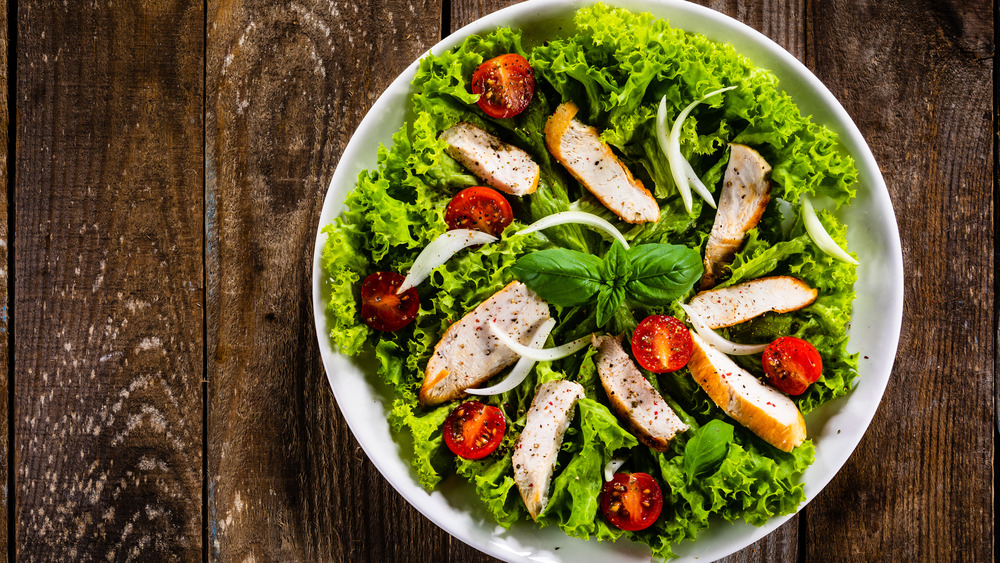The Real Reason You Shouldn't Eat The Same Thing Every Day
Even if you eat what you consider to be a healthy diet, if you eat the same daily menu on repeat, you may be missing out on certain key macro and micronutrients, and impacting your gut health as well. Health-conscious cereal for breakfast, the same salad for lunch, and a standard dinner of chicken, rice, and broccoli may sound like a smart eating strategy, but unfortunately, our bodies crave variety even if our brains (and our schedules) would prefer to stick to a routine.
Most people have certain fruits and vegetables that they prefer, but the widely accepted advice of "eating the rainbow" in terms of produce is important for a reason: The more colorful your diet, the more likely you are to include a wide range of vitamins and minerals (via The Healthy). The more focused you get on one or two options, like spinach and apples, the more likely you are to skip certain key nutrients like beta-carotene that's found in orange plants and fruits like carrots and sweet potatoes (via Medical News Today). And while you may rely on cereal for breakfast, you could be missing out on critical macronutrients like protein if you eat the same bran flakes with almond milk every morning (via Healthline).
What else do you miss on a bland diet?
Our gut is home to billions of good bacterium that are critical for not just digestive function, but also immune support. The healthiest gut microbiome is a diverse one, and different bacteria require different food sources. If you eat the same foods every day, the only bacteria that will flourish in your gut are the ones who specifically eat those foods as well. For a thriving microbiome, eat a wide variety of vegetables and fruits for different types of prebiotic-rich fiber in addition to fermented foods that are rich in probiotics, also known as good gut bacteria.
Rather than reinventing the wheel with every meal though, try to find a balance between meals and snacks that are easy to plan and make, but that also feature a wide variety of foods within them (via Healthline). For instance, you can continue to have a salad for lunch, but switch up the types of greens that you use as the base, add different vegetables and protein options on top, and change the types of nuts or cheese that you sprinkle on top. If you love cereal for breakfast, add different berries and change the type of cereal or the type of milk in your bowl. Keep the foundation the same, but add variety in the ingredients whenever possible.


